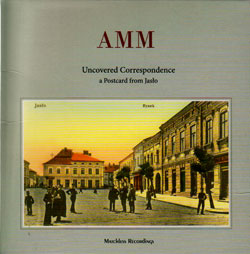
We've come a long way from the initial surprise generated by the first appearances of musicians and groups utilizing what, at that time, were perceived by inexperienced audiences as the "unusual" components of an instrument, or the characteristics of the very room in which the events took place. Most times, those "discoveries" were related to two names. One is John Cage, the other is AMM. Both associations are by now commonplace with today's critics, and a large number of those "explorers" have settled in comfortable patterns where silence ruptured by extremely rarefied sounds — either from the instruments or the surrounding environment — is the obvious course of action, in virtue of the relative effortlessness of getting accolades (and, in several occasions, grants) with minimum compositional effort. Meanwhile, some of the above mentioned unskilled listeners have become "experts" of the genre. Face it: the original remains the brightest point of reference.
Uncovered Correspondence — recorded by John Tilbury and Eddie Prévost in Jaslo, Poland, on May 15, 2010 — is in that sense a triple lesson: in restraint and sensibility, for sure; but especially in how to appear "silent" while sound is instead present and clearly established.
A word that comes to mind when a record like this is spun in my house is "tact". There's a big difference between an actor of nothingness and an artist aware of the complex physical and psychological relationships linking aural perception, movement and stillness. The real ability, as Andrzej Serwa points out in the liners, is that of demonstrating that "any object may be used as a means to create music". Yet this is a dangerous affirmation, for that's exactly the conviction that opened a huge door to the many pretenders that inhabit this district.
Of course, Tilbury and Prévost are immune to the risk: their skill in eliciting the ideal resonance, or depicting a delicate combination of deceivingly straightforward figurations, at the exact instant in which the music calls for that is typically inspiring. Piano and percussion produce advanced varieties of untarnished acoustic purity. The improvisation appears finely composed, and this is the best compliment I would love to receive as a musician. Gestures whose logic is palpable, sonorities evoking an aura of quiet ritual totally incomparable to the ridiculousness of a vacuous mannerism. Dozens of "composers" still try to hide inside that kind of shell, yet AMM — with or without Keith Rowe — have always walked at least ten years in advance. Imitators will perennially be doomed to failure, in spite of the fact that some are even collaborating with these overly democratic masters.
Comments and Feedback:
|



